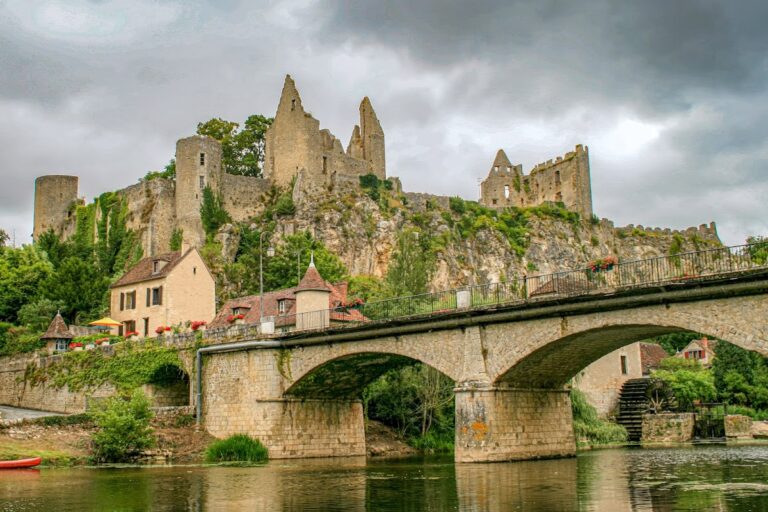Château de La Celle-Guenand: A Historic Medieval Fortress in France
Visitor Information
Google Rating: 4.8
Popularity: Very Low
Google Maps: View on Google Maps
Official Website: chateaudelacelleguenand.com
Country: France
Civilization: Unclassified
Remains: Military
History
The Château de La Celle-Guenand is located in the commune of La Celle-Guenand in France. It originated during the medieval period and was built by the local feudal civilization of the Indre-et-Loire region.
The earliest known phase of the site dates back to the 10th century when it was established as a monastery. This religious foundation marks the beginning of the location’s historical importance, serving the spiritual needs of the surrounding community. By the 15th century, the structure underwent a major transformation. Around 1422, it was rebuilt as a fortress, reflecting shifting military and political needs during the late Middle Ages. At this time, it became the seat of the Barony of La Celle-Guenand, an administrative and noble domain that covered what is today the modern municipality.
The first documented lord of the château, Antoine de Guenand, appears in records from 1422. He held the position of Captain-Governor of Loches under King Charles VII. His family maintained influence over the estate across generations. Pierre de Guenand and Antoine II de Guenand, descendants of Antoine, continued to serve in prominent noble and royal capacities throughout the 15th and 16th centuries, ensuring the château’s status within the regional aristocracy.
During the late Middle Ages, the area originally consisted of two smaller administrative districts called châtellenies: La Celle-Draon and La Celle-Guenand. These were eventually united under a single jurisdiction, coinciding with the château’s role as a baronial seat. The château remained connected to noble ownership through several centuries, transitioning among families including the Guenand, Azay, Coutance, Cantineau de Commacres, and Gaullier lineages. The Coutance family held the estate from 1537 until 1780, a period that spanned national events such as the Wars of Religion.
Throughout the 18th and 19th centuries, the château persisted through political shifts in France, including the French Revolution and the July Revolution of 1830. Despite these upheavals, it remained privately owned, reflecting the endurance of aristocratic estates amid changing political landscapes. In the 20th century, the château continued in private hands and later adopted a new role as a bed and breakfast.
The French Ministry of Culture recognized its historical importance by officially listing the château as a monument historique on June 11, 1943.
During times of conflict, including the Wars of Religion in the 16th century and World War II, the château’s inhabitants utilized an extensive network of underground refuge tunnels. These passages were originally carved beneath the château in the Middle Ages and served as protective shelters.
Remains
The Château de La Celle-Guenand is primarily constructed from tuffeau, a soft white limestone commonly used in the Loire Valley, lending the buildings their characteristic pale hue. Its layout centers on a large square building surrounded by watch turrets known as échauguettes and several towers. These defensive elements connect to the main residence through a covered gallery, which encloses a courtyard containing outbuildings, or communs. The seigneurial home, a rectangular structure, features additional towers and supplementary smaller buildings arranged around it.
One of the oldest architectural elements preserved is the 15th-century tower-porte, or gate tower, which served as the main fortified entrance to the château. Attached to it is a châtelet—a small gatehouse—equipped with defensive features including a portcullis, a heavy grating that could be lowered to block access. Remnants of the original drawbridge survive on the square tower, highlighting the château’s medieval defensive design.
Arrow slits, called meurtrières, allowed defenders to shoot arrows while remaining shielded, and gun ports known as bouches à feu accommodated firearms. Such features are mainly found in the original square access tower, reflecting adaptations to evolving military technology.
Beneath the château lie subterranean refuge tunnels, accessible near the base of the central staircase inside. These underground passages were constructed during the medieval period to provide protection during times of war or religious conflict. They were actively used during the Wars of Religion and later reopened as shelters during World War II, demonstrating their long-standing strategic importance.
The château complex sits on a hillside, with formal gardens and kitchen gardens arranged to the right of the main structures, enhancing both utility and aesthetics. Among the auxiliary buildings, the most notable dates from the 18th century and is positioned to the left of the gatehouse and main residence. This building served functional roles supporting the estate’s domestic and agricultural operations.
Together, these elements form a layered historical site where centuries of architectural evolution and defensive needs have left visible marks, integrating medieval fortification with later residential expansions.







